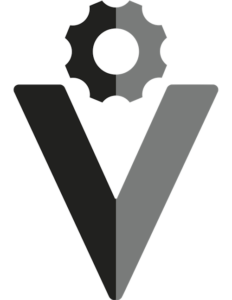How To Properly Turn Your Pins and Bushings
Pins and bushings often are the first parts on an undercarriage that need maintenance.
There are a number of variables that influence the amount of time before pins and bushings need attention, including application, type of material (soil, rock, etc.) in which the machine is being operated, how the operator operates the machine, maintenance practices, and the manufacturer of the undercarriage.
Properly maintained pins and bushings on machines in light applications operated with operators who operate the machine properly can last 7,000 hours (three seasons). Some contractors operating in highly abrasive materials have reported replacing pins and bushings after just 2,000 hours.
Pins and bushings wear internally when there’s a lack of lubrication, however, they don’t wear evenly; the pin wears on the side that makes contact with the bushing and wears on the mating surface of its inner diameter. Worn pins and bushings lead to tracks stretching (called pitching), which decreases the performance of the tracks and has negative impacts on the life of your undercarriage.
In order to prevent pitching, pins and bushings can be turned so that the wear side is no longer the side that makes contact. By bringing new surfaces to working areas, the wear for the difference in load is distributed. The pin and bushing turning provides new surfaces to working areas both internally and externally. Turning restores pitch on the track between pins and can prolong undercarriage life by enabling the chain to last until links and rollers need attention.
It is good to check your pins and bushings before you bring out your equipment for the season. If you see your tracks pitching, you know you have to address the pins and bushings. How often pins and bushings need to be turned also depends on all the above factors that affect pin and bushing life. You will likely need to do it at around 2,000 hours.
With the cost of labor, downtime involved, and compared to the cost a new aftermarket undercarriage, contractors are choosing not to do this maintenance. Unless the chains are not available due to the age of equipment, which at that point, the owner/operator’s hands are tied and to keep the equipment in service you do what you have to do.
Removing pins and bushings can be a challenge. They are designed to operate tightly together and fit tight within the undercarriage. If you were replacing them, you could cut them out with a torch. But when replacing them, you can’t damage them or the bosses in which they reside or you may cause critical damage.
Pins and bushings will shrink when cold. In order to make removal easier, apply dry ice or a fire extinguisher to the pin and bushing.
Then, you can use your BFH (big forgiving hammer) to pop put the pins and bushings. There are more specialty tools for removing and/or installing pins such as a track pin press, a hydraulic press or a porta power that will make the process easier.
After you removed the pin and bushing, flip the pin (tip to tip) and rotate the bushing 180 degrees so that new surfaces become exposed to the working areas, both internally and externally. Then pop them back in.
If the pin and bushing are either greased or wet, then there are slight variations to the process. With greased bushings, simply reassemble them with heavy grease. If they are wet, refill the pin with oil by pulling a vacuum in the pin’s oil reservoir (via a self-sealing plug in the end of the pin) to draw in new oil.
If your tracks only have a few hundred hours left on them, it might be worth it to save yourself the work and just replace the tracks. The cost of an aftermarket product, which costs much less than an OEM product, can be a great alternative solution to the labor and downtime required to turn pins and bushings.
Share this article
Searching For Heavy Equipment Parts?
We specialize in undercarriage and complete components for excavators, dozers, crawler loaders, and wheel loaders.

Searching For Heavy Equipment Parts?
We specialize in undercarriage and complete components for excavators, dozers, crawler loaders, and wheel loaders.
